Adil Najam
Other posts in this series for March 23, 2007 – here and here.
March 23 commemorates the passage of what was originally the ‘Lahore Resolution’ (Qarardad i Lahore) and later became better known as the ‘Pakistan Resolution’ (Qarardad i Pakistan). If there is a single most important founding document of Pakistan, it has to be this Resolution passed at the annual session of the All India Muslim League at its 1940 meeting (22-24 March) at Minto Park (now called Iqbal Park), Lahore (by the way, what a wonderful idea – for political parties to have annual, open, meaningful, annual sessions where real decisions are taken in a transparent and democratic manner!). In 1941, this Lahore (Pakistan) Resolution became part of the Muslim League constitution and in 1946 it became the basis of the demand for Pakistan.
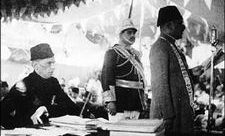
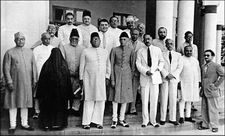
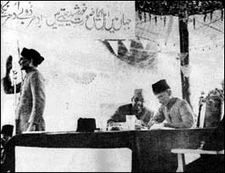
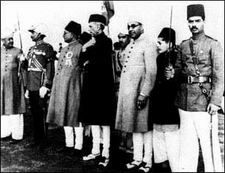
Most Pakistanis know what the resolution says; or, at least we think we do; in most cases rightly so. But because we are so very sure that we know what it says, we usually do not take the time to actually read it. Maybe we should. And there cannot be a better day to do so than today.It is, like many of the most important documents in history, a fairly short text. I reproduce it here in full. The first two paragraphs are contextual related to the then discussions on federation within the Government of India Act 1935. The third and the fourth paragraphs are the key operational content which is usually cited in textbooks. However, my view is that the final short paragraph is also key; especially in that it talks in the plural about “respective regions” (as do previous paragraphs).
While approving and endorsing the action taken by the Council and the Working Committee of the All-India Muslim League, as indicated in their resolutions dated the 27th of August, 17th & 18th September and 22nd of October, 1939, and 3rd of February, 1940 on the constitutional issue, this Session of the All-India Muslim League emphatically reiterates that the scheme of federation embodied in the Government of India Act 1935, is totally unsuited to, and unworkable in the peculiar conditions of this country and is altogether unacceptable to Muslim India.
It further records its emphatic view that while the declaration dated the 18th of October, 1939 made by the Viceroy on behalf of His Majesty’s Government is reassuring in so far as it declares that the policy and plan on which the Government of India Act, 1935, is based will be reconsidered in consultation with various parties, interests and communities in India, Muslims in India will not be satisfied unless the whole constitutional plan is reconsidered de novo and that no revised plan would be acceptable to Muslims unless it is framed with their approval and consent.
Resolved that it is the considered view of this Session of the All-India Muslim League that no constitutional plan would be workable in this country or acceptable to the Muslims unless it is designed on the following basic principles, viz., that geographically contiguous units’ are demarcated into regions which should be constituted, with such territorial readjustments as may be necessary that the areas in which the Muslims are numerically in a majority as in the North Western and Eastern Zones of (British) India should be grouped to constitute “independent States” in which the constituent units should be autonomous and sovereign.
That adequate, effective and mandatory safeguards should be specifically provided in the constitution for minorities in these units in the regions for the protection of their religious, cultural, economic, political, administrative and other rights and interests in consultations with them and in other parts of (British) India where the Mussalmans (Muslims) are in a majority adequate, effective and mandatory safeguards shall be specifically provided in constitution for them and other minorities for the protection of their religious, cultural, economic, political, administrative and other rights and interests in consultation with them.
This session further authorises the Working Committee to frame a scheme of constitution in accordance with these basic principles, providing for the assumption finally by the respective regions of all powers such as defense, external affairs, communications, customs and such other matters as may be necessary.
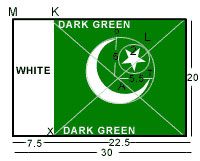 Apart from the fact that the Resolution talks clearly about “respective regions” (words that have import in the context of the events of 1971), I find the 4th paragraph particularly important. The complex structure of the language notwithstanding, the sentiment is clear as is its emphasis on the rights of minorities – not just of Muslims as a minority but of non-Muslim minorities in areas where they envisaged Muslim sovereignty. In such a short document, for the founding fathers to have devoted so much space to this issue would suggest that they – having lived as a minority themselves – considered the subject of minority rights to be of particular importance. This is one of the many areas where we were unable to live up to their aspirations.
Apart from the fact that the Resolution talks clearly about “respective regions” (words that have import in the context of the events of 1971), I find the 4th paragraph particularly important. The complex structure of the language notwithstanding, the sentiment is clear as is its emphasis on the rights of minorities – not just of Muslims as a minority but of non-Muslim minorities in areas where they envisaged Muslim sovereignty. In such a short document, for the founding fathers to have devoted so much space to this issue would suggest that they – having lived as a minority themselves – considered the subject of minority rights to be of particular importance. This is one of the many areas where we were unable to live up to their aspirations.

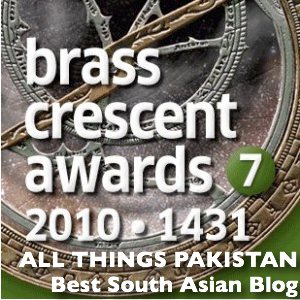


















































Disciple, ofourse not, just let the flag remain as it is. But the link you provided says we got rid of the minorities. I say it is false because those minorities are infact now part of Bangladesh. If the word riddance is to be used, then Yahya Khan got ‘rid’ of our own muslim brother’s and sisters living in East Pakistan.
As to continue the conversaion, what do you think the star in our flag represents?
“I remember seeing a Pakistan flag flying, which did not have the white portion. Can anyone comment on the history of the flag, its original design and subsequent developement?”
mahi,
The all green flag that you mention might have been a Muslim League (political party) flag, which is similar to the national flag minus the white portion. Pakistan’s official flag has not changed.
Jabir, do you mean something like this? http://tunha.wordpress.com/2007/03/05/new-pakistan i-flag/
I was brought-up & schooled in Pak, but have been working overseas since about a decade, during which time I have worked closely with various colleagues from across the border (North Indians, Tamils, Sikhs, Indian Muslims, etc.).
I have observed that during various larger group events (parties, office functions, etc.), the people from sub-continent would usually group together, whereas the Goras would form another group. The common topics of discussion for men would be cricket or politics, whereas for ladies it would be bollywood, fashion, etc.
It leads me to believe that Indians & Pakistans have a lot in common & actually enjoy socializing with each other.
However, during our discussions with some of our closer Indian friends, we discovered the strong negative stereo-typism that prevailed on both sides, for each other.
I have felt that this built-in bias (that we probably gradually develop during our formative years as a result of a system of society brainwash) usually presents an initial hurdle for any real progress from acquaintance towards real friendship.
So, in summary, I believe that although there is clearly no outright animosity or hatred between the average person, but there probably is a lot of work to be done, if the prejudices & built-in negative perceptions about each other are to be overcome (a task for the respective media & governments on both sides, which probably will bear results for the next generation).
Would be interesting to hear what others have to share, based upon their experiences.
Great post…I must say I’ve learned a good bit of history from this blog. It might be a good idea to have some sort of compilation of these sort of posts so that people who are not addicted to to this blog (like I am) can view them in an organized format.
“I think the way Pakistanis view India is exactly the same as Indians view Pakistan.”
Samdani, unfortunately, I don’t think that is true. I think, overwhelmingly, people in Pakistan have a very favourable opinion of Indian people (i.e. not government). I live in the U.S. and I’ve met Indians from many parts of India and for some reason a lot of them think that we Pakistanis look at 1947 as a big, big tragedy. Sure, we’re all saddened by the number of people who died but most Pakistanis (correct me if I’m out of touch…I doubt it) consider the creation of Pakistan as a very favourable thing. Now, what the post-Jinnah people did to ruin things is different but we’re not dicussing that here.